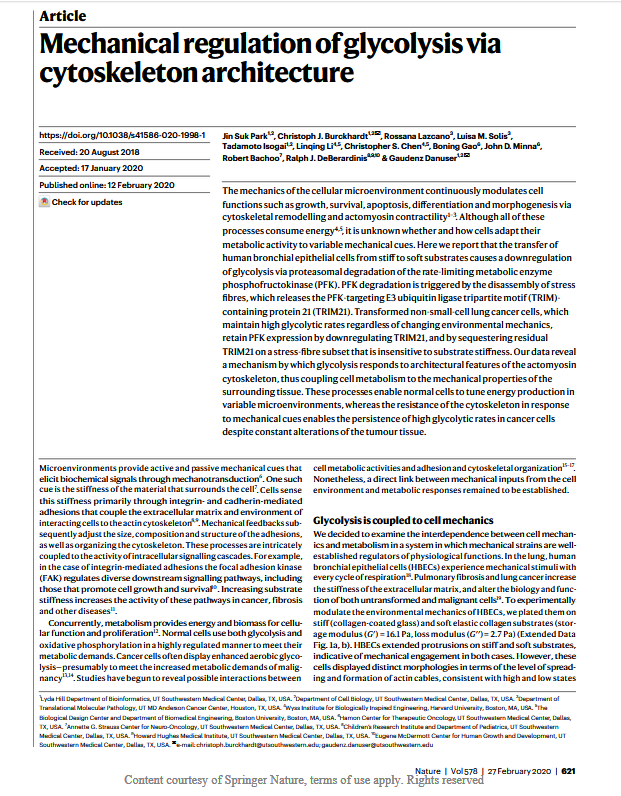21.08.2020
Mechanical regulation of glycolysis via cytoskeleton architecture
Nature, 2020
Recently, Park et al. identified an actin-TRIM21-PFK mechanistic pathway utilized by cells to adapt their metabolic activity in response to mechanical cues; this is the first report to identify a direct link between mechanical inputs from the cell environment and metabolic responses. Human bronchial epithelial cells (HBECs) were exposed to stiff or soft substrates to mimic environmental mechanical stimuli. Analysis of HBECs exposed to these different stimuli, using an array of metabolic, biological, and molecular tools, identified a significant decrease in glycolytic activity when exposed to soft substrate. This decrease in glycolytic activity was attributed to the proteasomal degradation of the rate-limiting metabolic enzyme phosphofructokinase (PFK). An extensive panel of E3 ubiquitin ligases were analyzed, and TRIM21 was identified as the ubiquitin regulating enzyme that controls PFK expression. The investigators showed that soft substrate exposure led to decreased F-actin bundling; additionally, actin regulatory drug stimulation resulted in decreased glycolysis, enhanced TRIM21 expression and subsequently decreased PFK levels. Importantly, this actin-TRIM21-PFK mechanistic pathway has been inactivated in many non-small cell lung cancer cells, and evidence in lung-cancer patients supported their overall findings. Cytoskeleton's Ubiquitination Detection Kit (Cat. # BK161) was an essential reagent in this study, providing a robust and effect tool to detect ubiquitinated PFK under various stimuli; a critical piece of evidence that was vital to their overall mechanistic pathway.
>> View article


